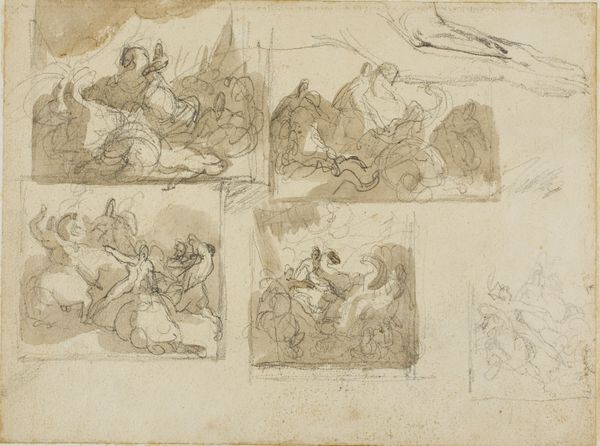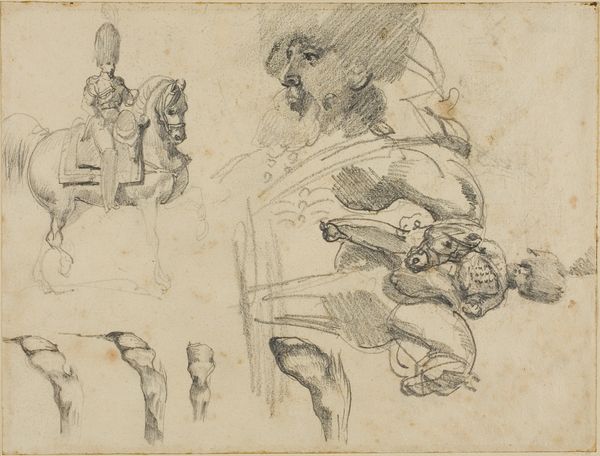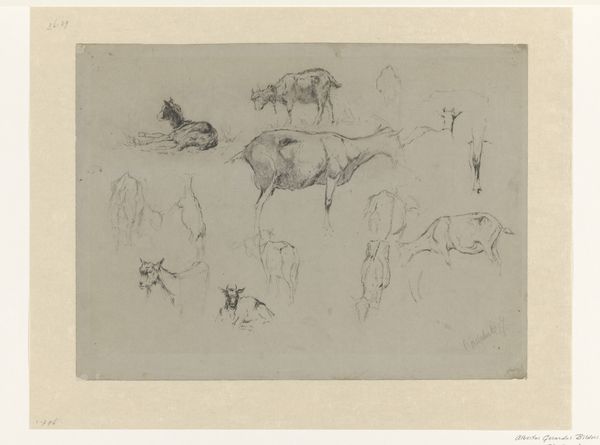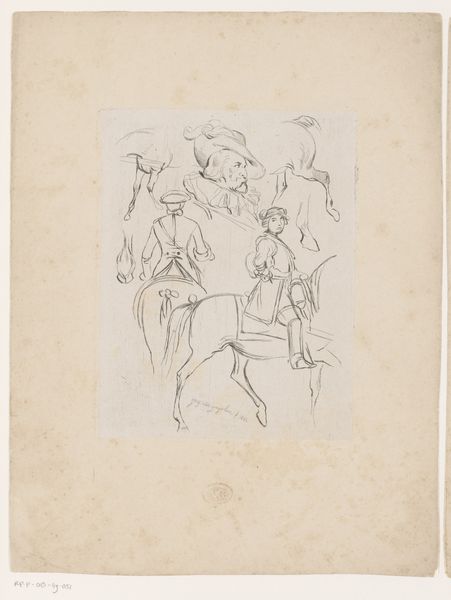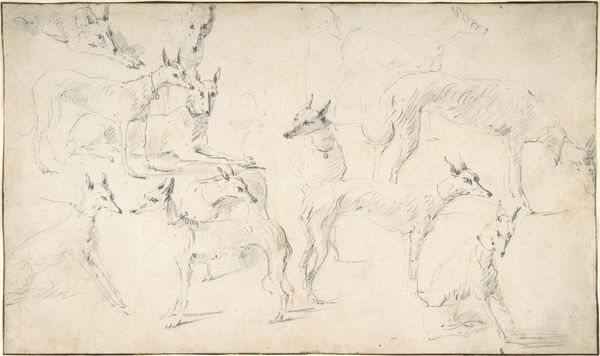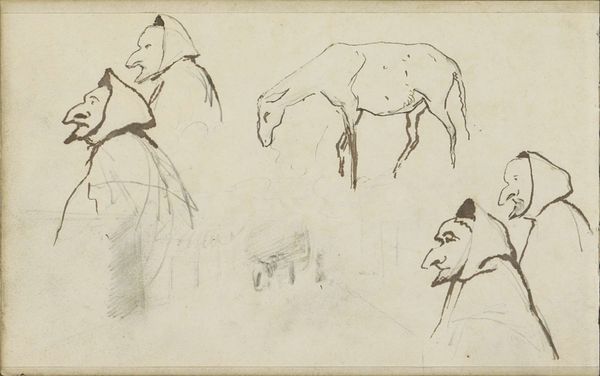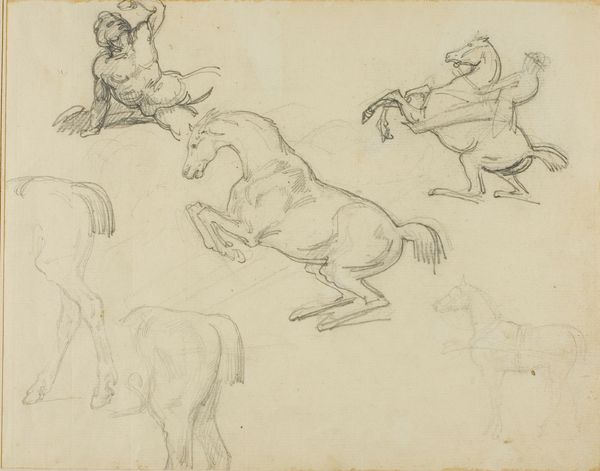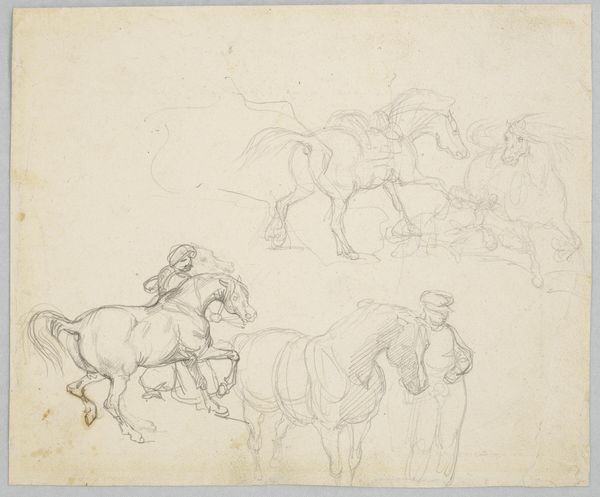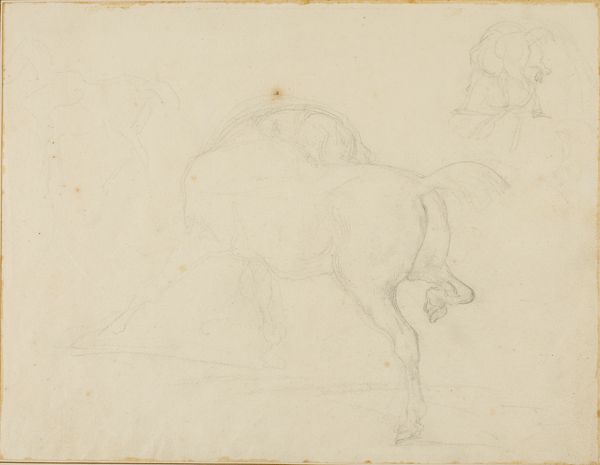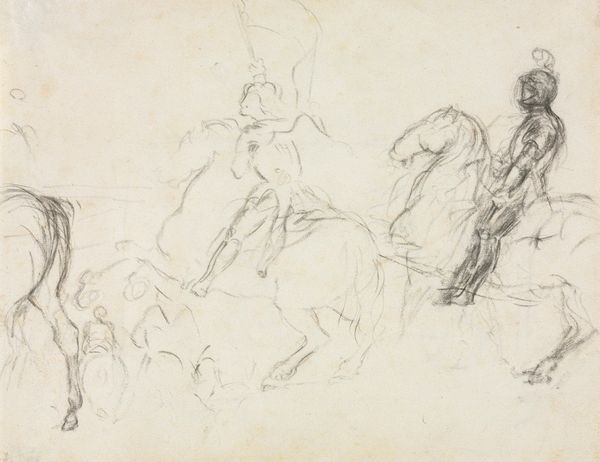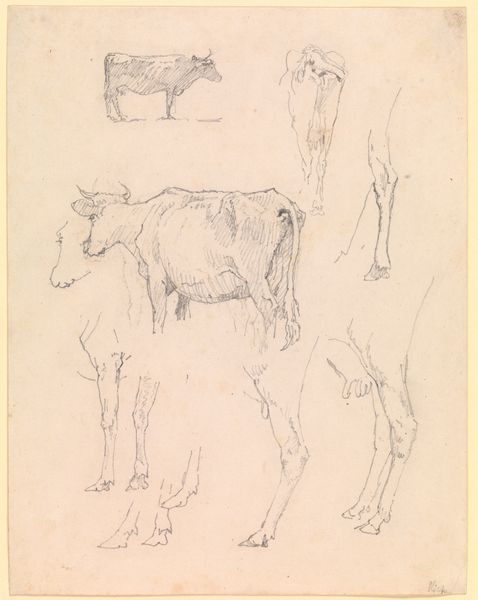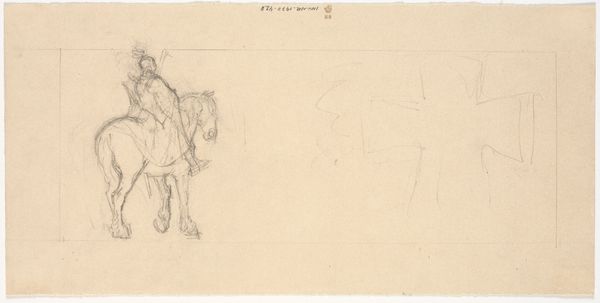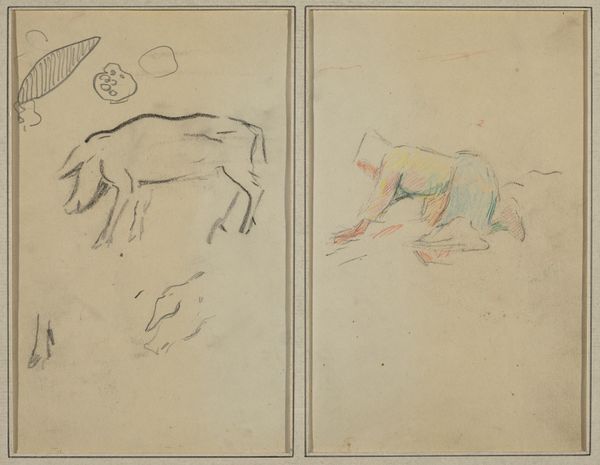
drawing, pencil
#
portrait
#
drawing
#
pencil sketch
#
landscape
#
figuration
#
romanticism
#
pencil
Copyright: Public Domain: Artvee
Curator: This is a page of sketches rendered in pencil by Théodore Géricault in 1814. It contains a series of preliminary drawings including studies of a horse and rider, a dog, a portrait of a military officer, and a single eye. Editor: My initial impression is one of searching, of a mind at work trying to capture something fleeting. There's a tentative, almost ghostly quality to the lines, and the blank space around the sketches amplifies that feeling of incompleteness. Curator: Absolutely. As an artwork in progress, it provides insight into Géricault's artistic process at the beginning of his career. It showcases the range of subjects that captured his interest. Looking at this through a socio-political lens, we can analyze his position within the Napoleonic era. What sort of power and authority is reflected here in the depiction of the military figure? Editor: That's fascinating. What's striking to me, though, is how the eye feels like a separate, almost psychological study—detached from the social and political narrative you're building. Does it suggest a deeper interest in human emotion that might complicate a straightforward reading of military power? It raises questions about the interior lives behind the image. Curator: Yes, and it also brings into question Géricault's overall identity and political sentiments. This sketch may tell of his conflicting identity during a historical tug-of-war for French social and political ideologies. Considering how masculinity and military strength are defined at that period, we should investigate how this page of sketches speaks to these tropes. Editor: That makes me consider how our experience viewing this work today, displayed in this museum, reinforces certain structures of looking. The frame and the way the objects are organized emphasize this piece’s “artfulness,” when originally it might have been simply functional, just a preparatory sketch for future artworks or nothing at all. I think the location, curation, and other contextualizing factors all play a role in imbuing it with layers of meanings. Curator: A museum setting, undoubtedly, shifts the perception, highlighting artistic intention but obscuring socio-historical conditions under which this artist was doing the work. Géricault was working amidst intense political turmoil in France. He also sought to capture more nuanced observations about man and society, and it's hard to make sweeping judgments based only on the pencil and the lines he made. Editor: Ultimately, this piece acts as a potent reminder that all historical artworks demand engagement from all possible perspectives. By acknowledging both our role as observers and the broader contexts surrounding creation, we avoid the dangers of any singular, rigid interpretation. Curator: Indeed, acknowledging art's capacity to ignite discourse is just as vital as contemplating Géricault's craft itself.
Comments
No comments
Be the first to comment and join the conversation on the ultimate creative platform.
